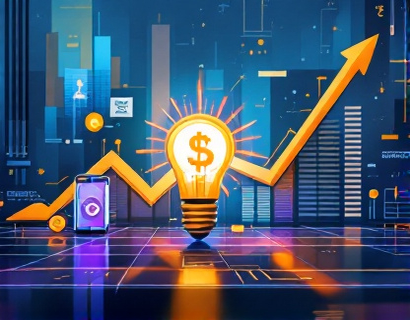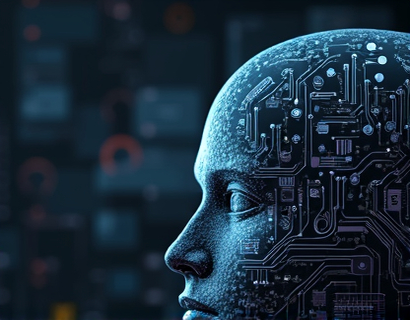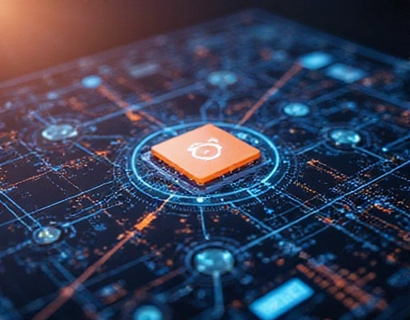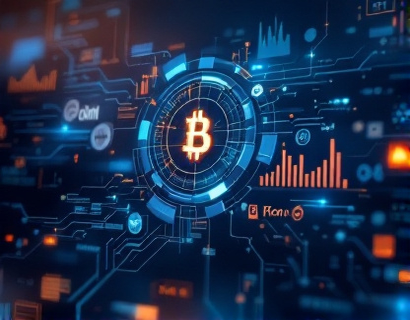Revolutionizing Cross-Blockchain Asset Conversion: The Power of Decentralized dApps
The landscape of blockchain technology is rapidly evolving, with new applications and innovations emerging regularly. One of the most significant challenges in this dynamic environment is the conversion of digital assets across different blockchains. Traditional methods often involve complex processes, high transaction fees, and compatibility issues. However, a cutting-edge decentralized application (dApp) is changing the game by streamlining cross-blockchain digital asset conversion, offering unparalleled compatibility and efficiency. This article delves into the intricacies of this revolutionary dApp, designed specifically for blockchain professionals and digital asset managers seeking innovative solutions.
Understanding the Need for Cross-Blockchain Asset Conversion
The proliferation of various blockchains, each with its unique features and protocols, has led to a fragmented ecosystem. Digital assets created on one blockchain may not be directly usable on another, necessitating conversion. This process is crucial for users who want to leverage the strengths of multiple blockchains, such as scalability, security, or specific smart contract functionalities. Traditional methods of cross-blockchain conversion often involve intermediaries, which can introduce delays, increase costs, and compromise security. A decentralized dApp addresses these issues by providing a direct, trustless, and efficient means of converting digital assets across different blockchains.
How Decentralized dApps Work
Decentralized dApps operate on the principles of blockchain technology, utilizing smart contracts to automate and secure transactions without the need for intermediaries. In the context of cross-blockchain asset conversion, a decentralized dApp serves as a bridge between different blockchains. Here’s a high-level overview of how it functions:
- Asset Locking: The user initiates the conversion process by locking the desired digital asset in a smart contract on the source blockchain.
- Smart Contract Execution: The smart contract executes a series of predefined steps to create an equivalent asset on the target blockchain. This includes verifying the asset's properties and ensuring compliance with the target blockchain's rules.
- Cross-Chain Communication: The dApp uses cross-chain protocols to facilitate communication between the source and target blockchains. These protocols ensure that the asset's metadata and value are accurately transferred.
- Asset Unlocking: Once the conversion is complete, the user receives the converted asset on the target blockchain, ready for use.
This process is entirely automated and transparent, with all transactions recorded on the blockchain. The use of smart contracts ensures that the conversion is executed precisely as programmed, reducing the risk of errors or fraudulent activities.
Benefits of Using a Decentralized dApp for Cross-Blockchain Conversion
The adoption of a decentralized dApp for cross-blockchain asset conversion offers numerous advantages over traditional methods:
Enhanced Security
Decentralized dApps eliminate the need for central authorities, reducing the risk of single points of failure and enhancing overall security. Smart contracts are immutable and auditable, ensuring that the conversion process is transparent and tamper-proof.
Reduced Costs
By removing intermediaries, decentralized dApps significantly lower transaction fees. Users can convert assets without incurring the high costs associated with traditional exchange platforms or middlemen.
Increased Efficiency
The automation of the conversion process through smart contracts speeds up the entire procedure. Users can complete conversions in minutes, compared to hours or even days with traditional methods.
Greater Flexibility
Decentralized dApps support a wide range of blockchains and asset types, providing users with the flexibility to convert assets between virtually any pair of blockchains. This versatility is particularly valuable for digital asset managers who need to operate across multiple ecosystems.
Improved User Control
Users maintain full control over their assets throughout the conversion process. They can monitor the progress in real-time and ensure that the conversion is executed as intended, without relying on third parties.
Technical Underpinnings of Cross-Blockchain Conversion dApps
To understand the technical sophistication behind these dApps, it’s essential to explore the key components and technologies involved:
Cross-Chain Protocols
Cross-chain protocols are the backbone of decentralized dApps for asset conversion. These protocols enable communication and asset transfer between different blockchains. Some of the most prominent cross-chain protocols include:
- Atomic Swaps: A protocol that allows direct, trustless exchanges of assets between different blockchains without intermediaries.
- Polkadot and Cosmos: These inter-blockchain communication protocols provide a framework for different blockchains to interact and transfer assets seamlessly.
- Wrapped Assets: Some dApps use wrapped assets, which are representations of original assets on a different blockchain, to facilitate conversion.
Smart Contracts
Smart contracts are self-executing contracts with the terms of the agreement directly written into code. In the context of cross-blockchain conversion, smart contracts perform the following functions:
- Asset Locking and Unlocking: Ensuring that assets are securely locked and unlocked at the appropriate stages of the conversion process.
- Validation and Verification: Checking the authenticity and integrity of assets before and after conversion.
- Automated Execution: Ensuring that each step of the conversion process is executed automatically and in the correct order.
Oracle Services
Oracles play a crucial role in decentralized dApps by providing external data to smart contracts. In cross-blockchain conversion, oracles ensure that the dApp has access to real-time data from different blockchains, such as asset balances and prices. This data is essential for the smart contract to make informed decisions and execute the conversion accurately.
Use Cases and Applications
The versatility of decentralized dApps for cross-blockchain asset conversion opens up a wide range of use cases for blockchain professionals and digital asset managers:
Portfolio Diversification
Users can easily diversify their portfolios by converting assets between blockchains that offer different advantages, such as higher transaction speeds or lower fees.
Cross-Chain Trading
Decentralized dApps facilitate cross-chain trading, allowing users to buy and sell assets directly between different blockchains without the need for intermediate exchanges.
Decentralized Finance (DeFi)
In the DeFi space, cross-chain conversion dApps enable users to access a broader range of financial products and services, enhancing liquidity and accessibility.
Interoperability Solutions
For developers and organizations building multi-blockchain applications, cross-chain conversion dApps provide a reliable solution for moving assets seamlessly between different ecosystems.
Challenges and Future Developments
While decentralized dApps for cross-blockchain asset conversion offer significant benefits, there are still challenges to overcome:
Scalability
Ensuring that the dApp can handle a high volume of transactions without performance degradation is a critical challenge. Ongoing research and development in scalability solutions, such as layer 2 protocols, are essential.
Regulatory Compliance
The regulatory landscape for blockchain and digital assets is still evolving. Decentralized dApps must navigate varying regulations across different jurisdictions to ensure compliance and avoid legal issues.
User Adoption
Educating users about the benefits and functionality of decentralized dApps is crucial for widespread adoption. User-friendly interfaces and comprehensive documentation can help bridge the knowledge gap.
Conclusion
The introduction of decentralized dApps for cross-blockchain asset conversion represents a significant leap forward in blockchain technology. By addressing the challenges of asset compatibility and efficiency, these dApps empower blockchain professionals and digital asset managers to operate more effectively in a multi-blockchain world. As the technology matures and adoption grows, we can expect to see even more innovative solutions emerge, further transforming the blockchain ecosystem.











































